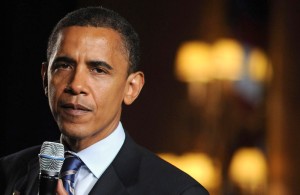Business and Economy
Key issues, and what lies ahead, for Obama’s trade agenda
WASHINGTON (AP) — TPA, TAA, TPP – It’s an alphabetical mix on trade that requires an explanation. The bottom line is President Barack Obama’s trade agenda, a top priority of his last two years in office, is back on track.
—
WHAT IS TPA?
Trade Promotion Authority, also known as “fast track,” appears on its way to final Senate passage and President Barack Obama’s signature. Enjoyed by previous presidents, it lets the administration negotiate trade agreements that Congress can reject or ratify, but not change or filibuster.
—
WHY IS TPA IMPORTANT?
All parties agree that negotiating nations are unwilling to make their best offers to the United States if they feel Congress is well-positioned to kill the deals. That doesn’t mean congressional approval is automatic.
—
WHAT COMES NEXT?
Obama will urge completion of negotiations for the 12-nation Trans-Pacific Partnership, or TPP. He would ask Congress to ratify it, following a period of public scrutiny certain to stir debate among unions, environmental groups, businesses, farmers and others.
—
WHAT COUNTRIES ARE IN THE TPP?
The United States, Australia, Brunei, Canada, Chile, Japan, Malaysia, Mexico, New Zealand, Peru, Singapore and Vietnam.
—
WILL OTHER TRADE AGREEMENTS FOLLOW?
Quite likely. For example, the United States has been negotiating with several European countries, pursuing the Trans-Atlantic Trade Investment Partnership, or TTIP.
—
WHAT ELSE REMAINS ON CONGRESS’ TRADE AGENDA?
Three more trade-related bills await Senate action. The most important would extend trade adjustment assistance, or TAA. Usually a union and liberal priority, it provides aid and retraining to workers displaced by international trade. The House also would have to pass TAA if it’s to become law.
—
WHAT ARE THE CHIEF ARGUMENTS FOR AND AGAINST FREE-TRADE AGREEMENTS?
Unions and many liberal groups say free-trade pacts ship U.S. jobs abroad and reward countries with poor environmental and workplace standards. Obama and others say U.S. products must reach more markets in the global economy.






















